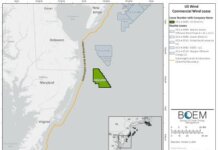The Fraser Institute, an independent, nonpartisan public policy think tank in Canada, claims in a new study that although wind turbines and solar panels are relatively cheap to operate – given their fuel source is free – they can be costly to build and connect to the power grid.
Despite rhetoric that renewable energy is cheap, wind and solar power generation comes with large – yet often ignored – costs that increase electricity prices for residents and businesses, the study argues.
“Electricity systems are complex, and too often, policymakers pursue renewable energy sources such as wind and solar without understanding their true costs,” says Pierre Desrochers, Fraser Institute senior fellow, associate professor at the University of Toronto Mississauga, and co-author of the report, “Generating Electricity in Canada from Wind and Sunlight: Is Getting Less for More Better than Getting More for Less?”
According to the report, as a result of Ontario’s Green Energy Act, which was designed to increase wind and solar power generation, residential electricity rates increased from C$0.052/kWh to C$0.1155 at the end of 2017, representing an increase of 122% in nine years.
The study also claims that wind and solar power benefit the environment when they displace emission-producing forms of generation, but in many Canadian provinces where electricity is generated by hydroelectric dams or nuclear plants, there is no corresponding environmental benefit.
“Despite what some politicians and proponents claim, there are large costs – and consequences – to adding wind and solar power generation to any electricity system, which lead to higher electricity bills for residents,” Desrochers says.
The Canadian Wind Energy Association (CanWEA) has spoken out in opposition to the claims in the new report.
“The Fraser Institute has missed the mark on the facts and conclusions in its analysis of the contributions renewable energy is making in Canada,” states Jean François Nolet, vice president of policy, government and public Affairs at CanWEA. “Wind energy provides reliable, cost-effective and clean electricity to provincial grids while generating local economic development, creating thousands of jobs and reducing carbon emissions across Canada.”
Nolet adds, “Wind energy is the lowest-cost option for new electricity supply in Canada and is a cornerstone to helping electrify the economy and meeting climate commitments. The wind energy industry is committed to working with communities, governments and system operators to ensure the responsible and sustainable development of the wind energy industry in Canada as the electricity grid is transformed to power a low-carbon future.”
CanWEA says its Pan-Canadian Wind Integration Study demonstrates that Canada can source more than one-third of its electricity from wind energy without compromising grid reliability. CanWEA’s Wind Energy Grid Services Primer also provides insights about advancements in variable generation integration, the key capabilities of wind power generation facilities when it comes to grid services and market considerations to encourage continued success.





Bill and Fraser Institute You have both terribly missed the point. Are you arguing that renewable energy cost taxpayers money because of the construction and operating cost or because the governing body at the time of contracts with private investors over purchased the energy? Yes, the IESO purchases energy for ridiculous prices in Ontario but who negotiated those prices? Did the private investors just name their price and the IESO agreed? That is not the investors fault nor the taxpayers, that is the fault of governing bodies not understanding what they were doing. Secondly, yes taxpayers paid 122% higher rates… Read more »
The CANWEA quote, uses the words, “reliable”, “cost-effective”, and “clean.” However, the Fraser Institute considered those points as they described the issue of “it is only available at certain times of the day and/or when the weather cooperates”. That and “reliable” sound mutually exclusive, unless it means to rely on wind not being available when most needed. Ontario currently lists 4486 MW of transmission system connected wind (more actually as some shown as commissioning is not counted.) Yet, 5 days ago, the hourly total wind output on 4 hours was 11, 16, 32, 43 MW – with 8 hours under… Read more »